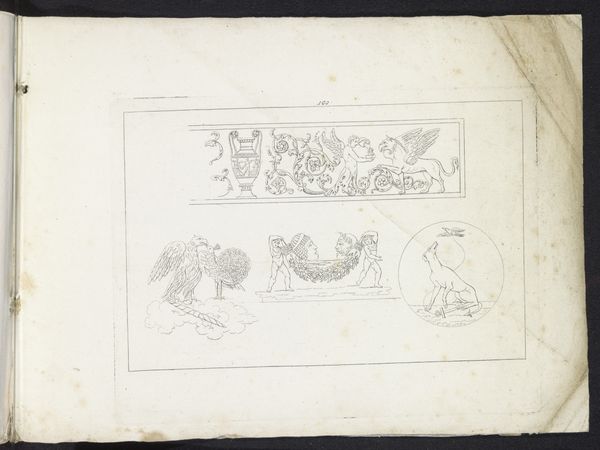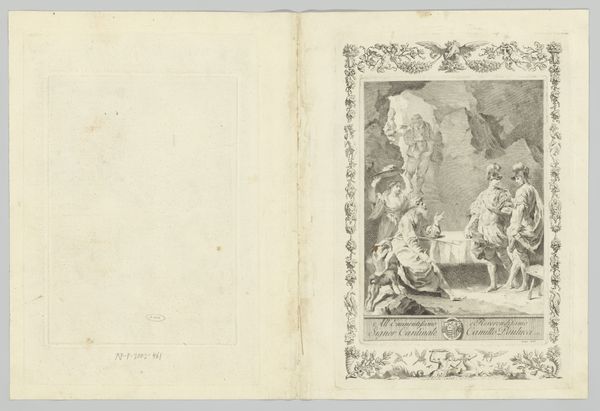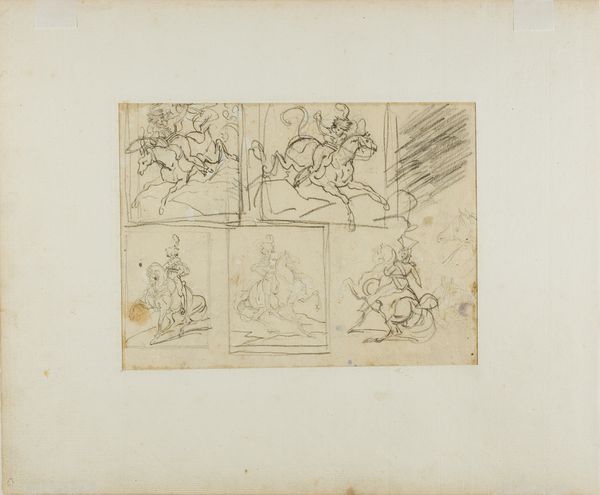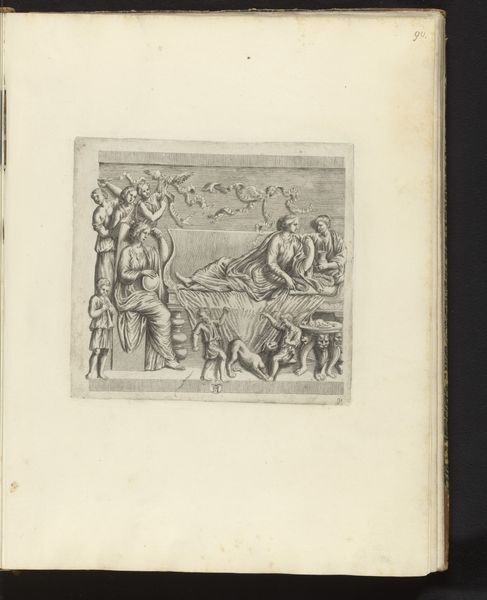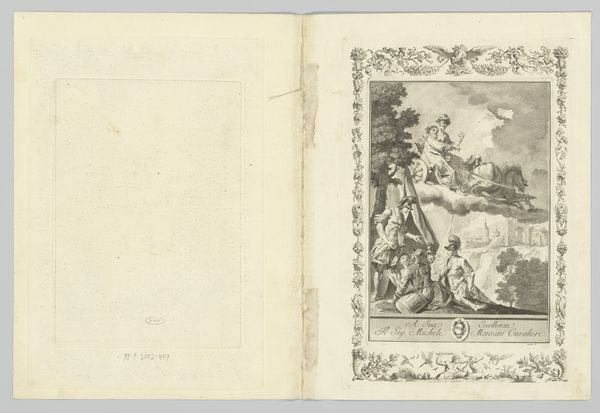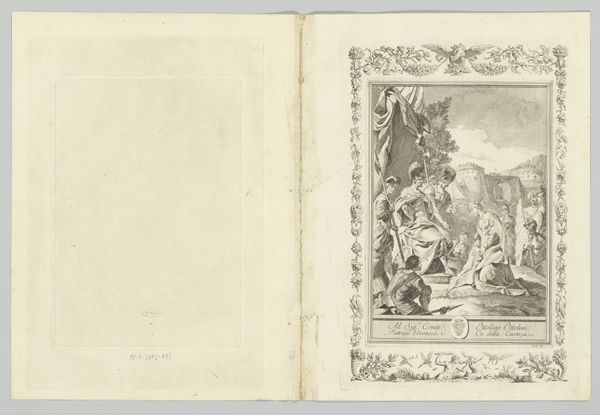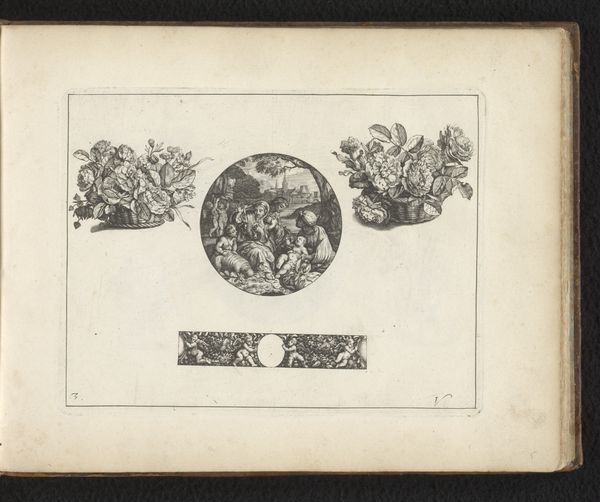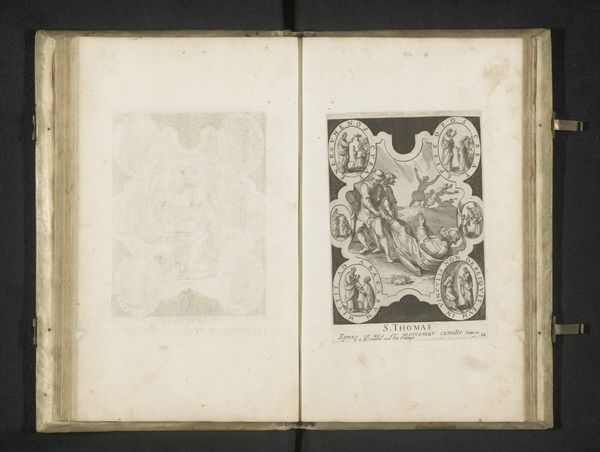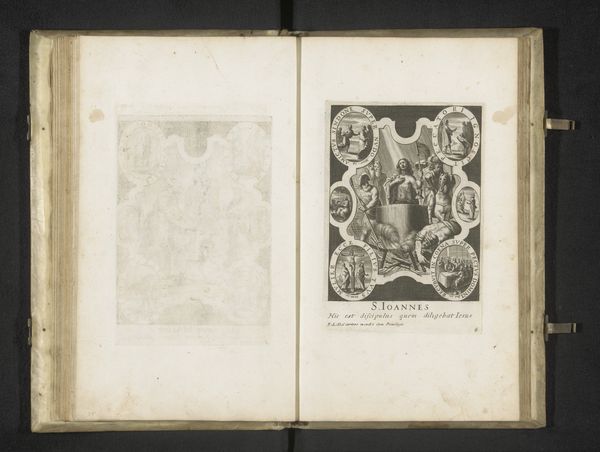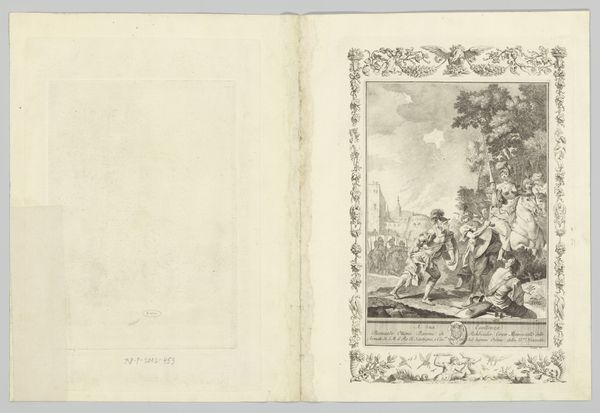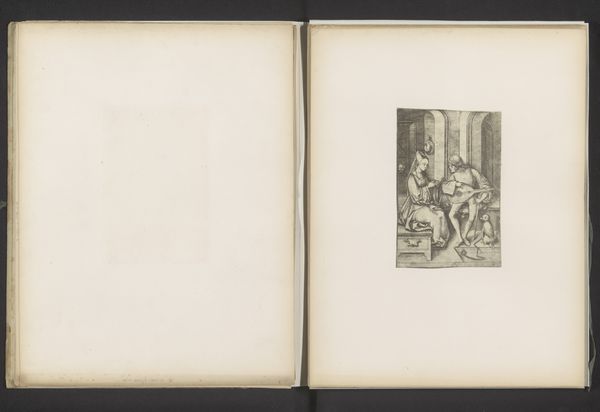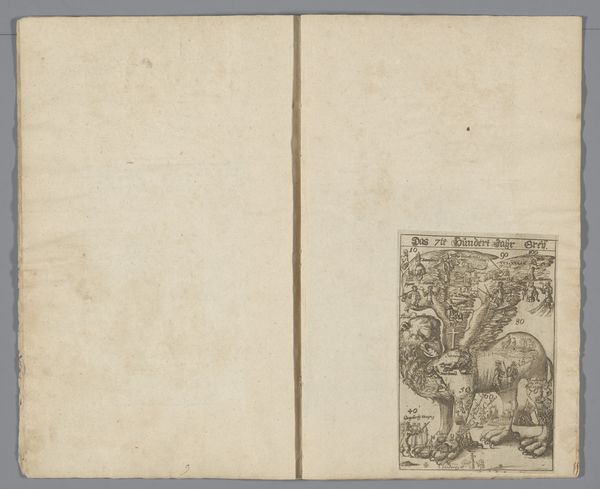
drawing, paper, engraving
#
drawing
#
aged paper
#
toned paper
#
light pencil work
#
pencil sketch
#
landscape
#
flower
#
paper
#
personal sketchbook
#
pen-ink sketch
#
pen and pencil
#
pen work
#
sketchbook drawing
#
sketchbook art
#
engraving
#
rococo
Dimensions: height 182 mm, width 137 mm
Copyright: Rijks Museum: Open Domain
Curator: Oh, I find this so charming. There’s something about these rocaille designs that just tickles my fancy. Editor: Agreed, it possesses a delicate allure. What are we looking at here exactly? Curator: This lovely piece, residing at the Rijksmuseum, is entitled “Rocailles met bloemen en met een haven”, or “Rocaille with flowers and with a harbor”, it’s thought to have been made sometime between 1719 and 1754, by François-Thomas Mondon. Editor: My immediate impression is that the floral compositions evoke a certain… aristocratic excess? Is that fair? Like a visual echo of powdered wigs and opulent garden parties? Curator: Precisely! The rococo style was all about that elaborate ornamentation, wasn’t it? The curves, the shells, the theatrical scenes… It’s fantasy realized. These designs, rendered delicately with pencil and ink on paper, would have been models for engravers. Editor: I see those refined lines, like wisps of a dream. Were these destined to adorn furniture, perhaps? Or textiles? Curator: Exactly. These images, with their romanticized harbor scenes alongside flourishing flora, were likely prototypes, samples to inspire a new generation of artisans creating mirrors and frames. Think about the world back then – a period defined by class hierarchies, royal extravagance… Editor: So these seemingly innocent sketches are tied to a system, a regime, that greatly valued decoration and appearances? Curator: Absolutely. There's this dance between beauty and… societal pressures. Mondon created art that both reflected and reinforced those structures, wouldn't you say? It speaks volumes about art's role, even then, in reflecting the values of the time. Editor: Yes, though it's easy to get swept away by the beauty of this period, we mustn't lose sight of its social implications. What a fascinating blend of aesthetics and politics, isn’t it? It gives these images new layers, and perhaps more shadows, too. Curator: And perhaps, in acknowledging this, we can allow Mondon's work to be beautiful *and* provoke an inner reflection, an examination of values, yesterday and today. Editor: Precisely. It’s a potent reminder of how art can illuminate more than what’s on the surface.
Comments
No comments
Be the first to comment and join the conversation on the ultimate creative platform.
